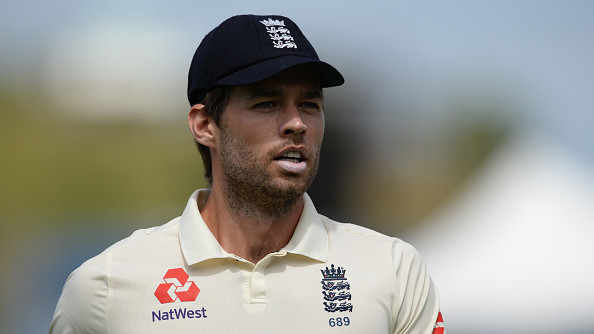 The Board of Control for Cricket in India (BCCI) has taken away its curator who was to oversee the pitch preparation at the MA Chidambaram Stadium in Chennai for the second Test between India and England, starting February 13.
The Board of Control for Cricket in India (BCCI) has taken away its curator who was to oversee the pitch preparation at the MA Chidambaram Stadium in Chennai for the second Test between India and England, starting February 13.
The development has come in the wake of India’s embarrassing 227-run loss in the series opener to England at Chepauk earlier this week.
According to a report published in IANS, the Indian team management is now watching over the pitch preparation alongside chief local groundsman V Ramesh Kumar, who hadn't prepared a pitch even for a first-class game before the first Test against England.
Kumar has been given the crucial task of preparing the pitch, for which black soil will be used rather than red.
While BCCI curator Taposh Chatterjee of Central Zone was sent off immediately after the first Test, he was instead tasked to oversee the preparation of pitches for the Vijay Hazare Trophy matches in Indore and Jaipur.
"Taposh has left. He was there for the first match. V Ramesh Kumar will oversee the preparation for the second Test," Tamil Nadu Cricket Association (TNCA) secretary RS Ramaswamy told IANS.
Kumar is a businessman and doesn’t even have the experience of preparing a first-class wicket.
"It is a surprise that no BCCI curator is at the spot as the BCCI sent back Taposh after the first Test when the players showed their displeasure with the way the pitch [for first Test] behaved on the first two days. The MA Chidambaram Stadium has not had a proper curator for a long time. Earlier, K Parthasarathy, the head groundsman, was looking after it, but he was has not been a regular in the past few years," said a source close to the development.
"The wicket for the second Test is being prepared under the supervision of the team management. There has been no proper watering. The surface for the first Test had red soil and the pitch to be used for the second match is of black soil," he added.
Over the last 15 years, the Chennai pitch has often made the headlines owing to lack of grass and its weird behaviour due to mixture of red and black soils. The pitch for the next game is also a mix, with its topping being of black soil while the one used for the first Test was entirely of red soil.
"At other grounds like Bengaluru, Kolkata, or Mumbai, the grass recovers quickly. But not in Chennai nowadays. There are a combination of reasons for this. One is that there are far too many matches being played and the other is the Ranji Trophy team's demands. You would have noticed in the Indian Premier League also that chasing is always difficult here. There is no proper curator looking after it," the source said.
According to the experts, pitch (No. 2) for the first Test should have been used for the second and the one being used for second (No. 5) should have been used for the first.
"The reason is that the black soil retains water, so in the three-day gap before the second Test, only 10-20 litres water can be allowed at best. Otherwise, if you put more, the surface, due to heavy clay content, will retain water. If they had used pitch No.2, the red soil one, for this game instead, then you could have given more water in the three-day gap and it would have dried easily as that soil doesn't hold water. Now, due to dryness and no water, the black soil wicket can crumble early. It can also keep low," said an official.
Former head of BCCI pitches and grounds committee, Daljeet Singh, shared his two cents on the characters of different pitches.
"I cannot comment on the Chennai pitch as I am not at the venue, if you mix soils it is difficult to predict a pitch's character. Black soil has more clay content, clay particles are the smallest in soil. The more the particles, the more water it will hold. But red soil has more silt and has more wear and tear as it gets dried and breaks easily for spin. It doesn't hold water," he said.
(With IANS inputs)


